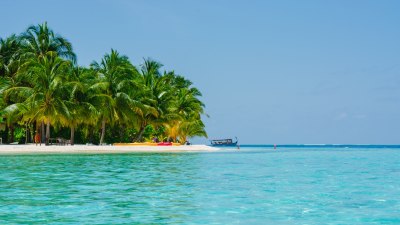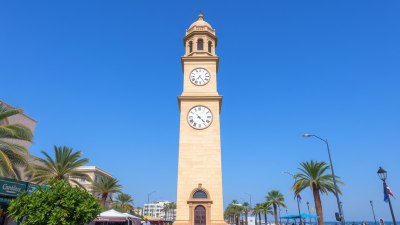Tropical Storm Season in the Caribbean: Is It Worth the Risk?
Explore the impacts and risks of tropical storm season in the Caribbean and how to prepare for natural disasters.

Tropical storms pose a significant threat to the Caribbean, a region known for its stunning landscapes and vibrant cultures. As the tropics heat up each summer, the risk of storms increases, leading to economic and safety concerns for locals and tourists alike. Many travelers wonder if visiting the Caribbean during this time is worth the risk, balancing the allure of beautiful beaches against the unpredictability of nature.
The Caribbean hurricane season officially spans from June 1st to November 30th, peaking between August and September. This season is marked by the formation of tropical storms and hurricanes that can cause widespread disruptions. The region experiences an average of 11 tropical storms each year, with a few reaching hurricane status. Travelers should stay informed about the potential impacts of tropical storms, which can range from heavy rainfall and flooding to strong winds and storm surges.
Understanding Tropical Storms
A tropical storm is characterized by sustained winds ranging from 39 to 73 miles per hour (34 to 63 knots). Once winds exceed 74 mph, the storm is classified as a hurricane. The storms develop over warm ocean waters, gathering energy as they move westward due to prevailing winds. The Caribbean’s warm climate makes it an ideal breeding ground for these dangerous weather systems.
Tropical storms can have devastating consequences, particularly in island nations that may be less equipped to handle such events. Damage to infrastructure, loss of power, and disruption to essential services can last long after the storm has passed. Additionally, flooding can lead to landslides and environmental degradation, impacting the region's ecosystems and wildlife.
Economic Impact of Tropical Storms
The economic implications of tropical storms on the Caribbean are significant. These storms can disrupt tourism, which is a critical source of income for many islands. During the storm season, potential visitors might reconsider their travel plans due to the risks involved. Hotels and businesses often face cancellations and reduced occupancy rates, which can lead to a decline in revenue. In extreme cases, prolonged storm damage can cause long-term economic downturns in affected areas.
According to a study conducted by the Caribbean Development Bank, countries like Puerto Rico and the Dominican Republic have experienced economic losses in the billions due to hurricanes in recent years. Recovery from such disasters is not quick; it can take years for communities to rebuild and industries to recover. This has prompted island governments to invest in better infrastructure and disaster resilience measures.
Safety Precautions and Preparedness
For those planning to visit the Caribbean during the storm season, preparation is key. Tourists are encouraged to monitor weather forecasts and advisories, particularly when booking travel plans. Being aware of evacuation routes, local emergency services, and communication plans can make a significant difference in ensuring safety before and during a storm.
Travelers should consider purchasing travel insurance that covers trip cancellations due to severe weather. Many insurance policies offer protection against unforeseen cancellations and delays caused by tropical storms, ensuring that tourists can recoup some of their financial investments should their plans be disrupted.
The Benefits of Visiting the Caribbean in Storm Season
Local communities and businesses often organize events and festivities to attract visitors during slower months, showcasing unique cultural experiences and traditions. This supports the local economy and allows travelers to engage more deeply with the island's culture.
Planning Your Caribbean Getaway
If you decide to travel to the Caribbean amid tropical storm season, make your trip as safe and enjoyable as possible by planning ahead. Research your destination thoroughly, considering historical data about storm impacts and local infrastructure. Understand the average duration and intensity of storms in the area you are visiting. Popular vacation spots like Jamaica, the Bahamas, and Barbados all have varying degrees of vulnerability to storms and hurricanes.
Consult expert travel guides and weather apps, staying up to date on changing conditions. Furthermore, consider booking accommodations that are known for their disaster preparedness, such as those that employ emergency protocols and have robust safety measures in place. A good hotel will provide updates during storms and facilitate emergency services if necessary.
Engaging with the Local Community
While the threat of a tropical storm looms during the season, travelers can consider engaging with local communities to learn about their resilience and coping strategies. Many islanders are used to preparing for storms and can provide insights into their experiences. Engaging in community-led initiatives or volunteering can also provide a unique travel experience, allowing tourists to contribute meaningfully to recovery efforts when storms hit.
If you experience a storm during your trip, it’s essential to remain level-headed and follow local authorities and your accommodations’ safety measures. The storm can be a humbling reminder of nature's power, but it can also foster a sense of unity among those affected. Travelers are often astounded by the hospitality and camaraderie of local communities in the aftermath of a storm.
Weighing the Risks and Rewards
The allure of pristine beaches and turquoise waters may rejuvenate the soul, but it's essential to respect nature's unpredictability. Consider alternatives to ensure safety, such as exploring less vulnerable locations during peak storm months or adjusting travel plans to avoid direct storm paths. Whether you seek adventure in the surf or a tranquil retreat on the shore, understanding the risks and managing them wisely can lead to unforgettable experiences in the Caribbean.











